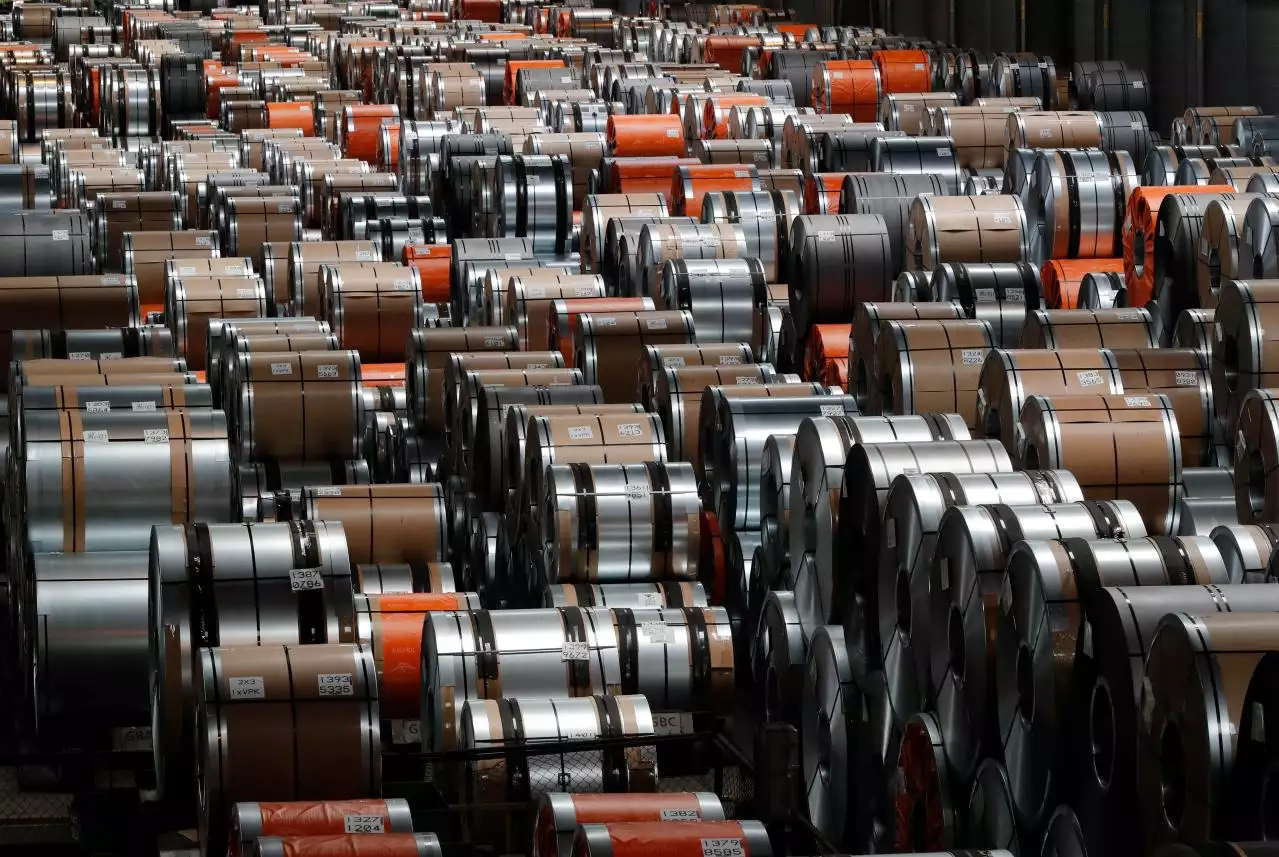2 tháng 4, 2024
Competing with China, Hoa Phat Lowers HRC Steel Prices to $550/Ton

Recently, Hoa Phat (HOSE: HPG) has significantly reduced its hot-rolled coil (HRC) steel prices amid weak demand and intense competition with China.
On April 1st, Hoa Phat cut its HRC steel price by $40 per ton, bringing the price for SAE1006/SS400 delivery in June 2024 down to $550 per ton (CFR), excluding VAT.
This price is equivalent to 13,740 VND/kg, a decrease of 980 VND/kg from the previous month. According to a trader in Hanoi, the current price is "very low." Meanwhile, Chinese HRC offers have increased by $10 per ton to $550 per ton due to a recovery in steel futures prices on April 1st.
Hoa Phat's price reduction comes amid weak domestic demand and pressure to compete with cheap Chinese steel.
**Dispute over Chinese Steel**
The issue of competition with Chinese steel has also become prominent recently, especially as Vietnam has ramped up imports of 1.4 million tons of HRC from China, accounting for 74.2% of total HRC imports in the first two months of the year.
The lower prices of Chinese steel are likely the main factor behind this situation. Since Q1 2023, the price of Chinese HRC has decreased from $618 per ton to around $520-560 per ton. In contrast, the HRC prices of Hoa Phat and Formosa are about $50-60 per ton higher.
In this context, Hoa Phat and Formosa—Vietnam's only HRC producers—proposed imposing anti-dumping duties on Chinese steel on March 19th.
Nguyen Viet Thang, General Director of Hoa Phat (HOSE: HPG), stated that this move aims to prevent unfair competition and below-cost selling from China. He noted that in recent years, China's economy has slowed, and the real estate and construction sectors are in crisis. This has led to a severe oversupply of steel in China, forcing them to sell abroad.
"When China has excessive supply, companies are willing to sell at a loss. Many Chinese steel companies lost money last year, and they are willing to sell below cost to ensure their products reach the market," he said.
However, this proposal has faced strong opposition from nine companies that use HRC as a primary raw material for producing coated sheets, pipes, structural steel, and other steel products, such as Nam Kim, Hoa Sen, Phuong Nam, etc.
These companies argue that the dumping margin of HRC from China imported into Vietnam is only 1.26%, not exceeding 2%, so it cannot be considered dumping. They believe that importing HRC is reasonable when domestic supply is insufficient to meet demand. Specifically, Vietnam’s consumption of HRC is between 10-13 million tons per year, while the total designed production capacity in Vietnam is only 8.2 million tons per year.
The group of nine companies believes that if Vietnam initiates an anti-dumping investigation into imported HRC, it will have extremely negative consequences not only for the steel industry but also for the entire economy and society. “Any adverse developments with HRC raw materials could impact the entire steel industry,” according to a joint statement from the companies.
Meanwhile, Vu Van Thanh, Permanent Deputy General Director of Hoa Sen Group (HOSE: HSG), said that initiating an anti-dumping investigation would benefit only a few companies. He expressed concern about "monopolistic tendencies and price manipulation leading to excessively high raw material prices, causing the coated sheet and pipe industry to collapse," said Hoa Sen’s leadership. “When HRC prices rise, the cost of finished products increases accordingly, and consumers will bear the difference.”
Source: Vietstock
Related Posts
4 thg 11, 2024
Some markets have been trying to account for the possibility of an extremely uncertain election. Gold prices have reached new highs, while equities have adjusted downward. Meanwhile, many physical commodities remain under pressure due to concerns over declining demand, oversupply, and a stronger USD.
Market Insights: The Critical Moment
1 thg 11, 2024
One of the key data points drawing significant attention this week is the U.S. Nonfarm Payrolls (NFP) report, set to be released on November 1. This data will influence the direction of the USD, measured by the U.S. Dollar Strength Index (DXY), thereby impacting commodity prices.
Market Insights: U.S. Nonfarm Payrolls for October
Related Posts
13 thg 11, 2024
For commodity investors, the most pressing question is how the markets will react as Donald Trump returns to the White House. The new President is set to be inaugurated on January 20, 2025.
Investment Opportunities in Commodities After Trump’s Victory

4 thg 11, 2024
Some markets have been trying to account for the possibility of an extremely uncertain election. Gold prices have reached new highs, while equities have adjusted downward. Meanwhile, many physical commodities remain under pressure due to concerns over declining demand, oversupply, and a stronger USD.
Market Insights: The Critical Moment

1 thg 11, 2024
One of the key data points drawing significant attention this week is the U.S. Nonfarm Payrolls (NFP) report, set to be released on November 1. This data will influence the direction of the USD, measured by the U.S. Dollar Strength Index (DXY), thereby impacting commodity prices.
Market Insights: U.S. Nonfarm Payrolls for October

24 thg 10, 2024
Coffee prices have risen nearly throughout the entire year, driven by weather-related issues in Brazil and Vietnam, the world's two largest coffee-producing countries.
How will coffee prices evolve by the end of 2024?

